In this article, I take you to the hygge land of serenity and tranquillity, of endless sandy beaches where you can collect shear unlimited amounts of shells. This adventure will take you through a land full of myths and legends about the Vikings, but also through a land of cutting-edge architecture and great cosmopolitan cities. There are also plenty of tips for your 14-day Denmark itinerary and general tips for a roadtrip through Denmark.
This road–trip takes you through the whole of Denmark. Most of the route takes you through Jutland, along the west coast to Skagen, where the North Sea and Baltic Sea meet. From there, the route continues south to Aarhus.
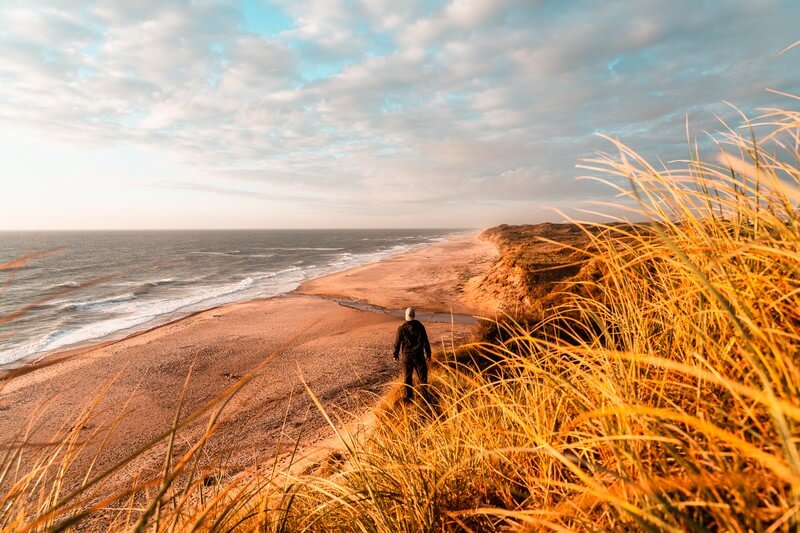
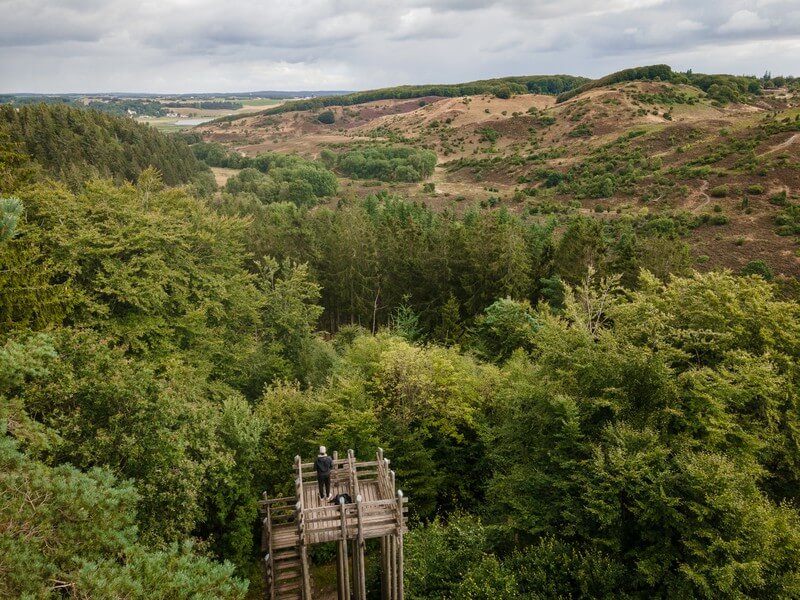
Then you leave Jutland heading east, cross the island of Funen and then continue on the island of Zealand to Copenhagen. From there, the route takes you southwards again, past Møn, Falster and Lolland, where you finally take the ferry from Rødby to Fehmarn and back to Germany.
I travelled a total of 1,840 km for this road trip and it took me 14 days. In other words, on average you drive around 100-150 km every day on my suggested Denmark itinerary. This includes the outward and return journey from and to Hamburg. This means that if you are travelling from somewhere else, you should also calculate 1-2 extra days. I also spent 2 full days in Copenhagen and 2 days in Aarhus, so I didn’t drive every day. 3 weeks is better for this Denmark route, because then you have more time to spend in the most beautiful places.
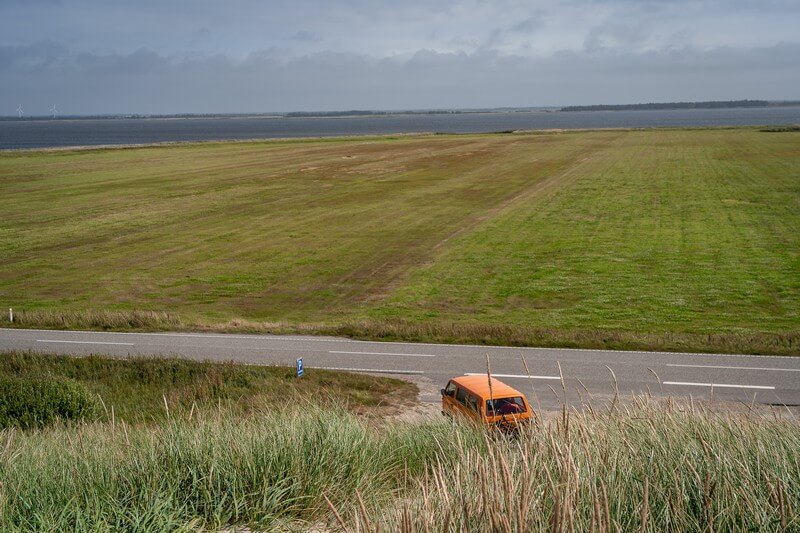
This road trip was all about seeing and experiencing as much of Denmark as possible. It is packed with highlights and great experiences. If you only want to stay in a few places, but for longer, you can shorten the route to suit your wishes. In principle, you could, for example, spend the 14 days on the west coast of Denmark alone and not go far wrong.
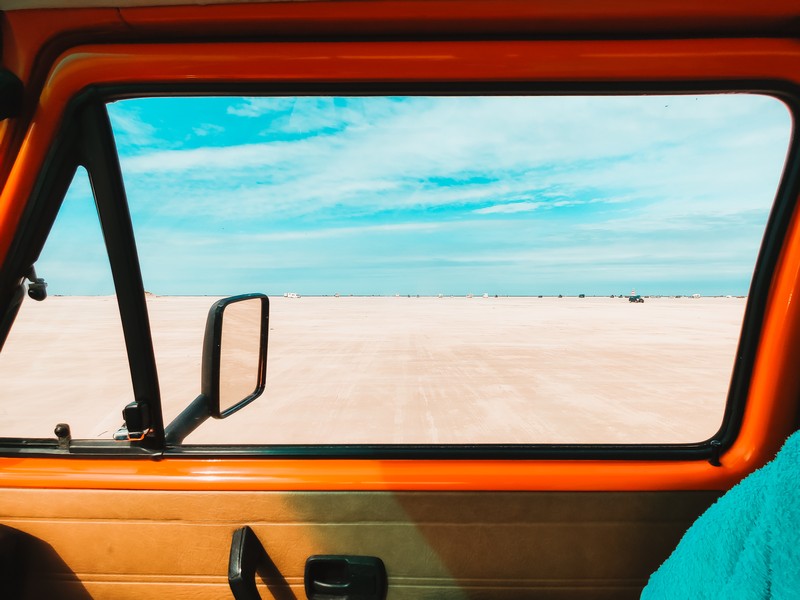
I drove this Denmark route in my campervan and then always stayed overnight at campgrounds. That’s why I always tell you which campsites I can recommend in this article. But I’ll also give you tips on other accommodation if you’re only travelling with a normal car. Denmark has a lot of cool holiday apartments, but there are also great hotels (which are a good option, especially in the cities).
By the way: Wild camping is prohibited in Denmark, just like in Germany. Fines of up to 500 euros can be imposed here.
1. Hamburg to Rømø
- Day1: 1 overnight stay
- Accommodation tip: First Camp Lakolk
Rømø is the first must-visit on your Denmark route. You will first pass the Marsk Tower (aka Marsk tårnet). This tower is shaped like a spiral and attracts many tourists. But to be honest, I think the entrance fee is far too expensive for the view. There are better views later on this Denmark route. It’s still worth making a short stop and taking a photo.
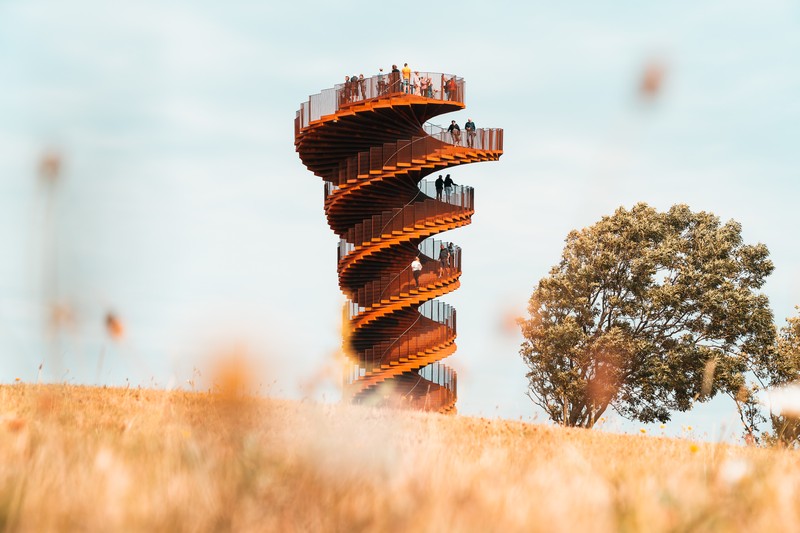
Continue over the really long bridge Rømødæmningen and directly onto the island. You can then drive on to your accommodation or directly to the beach, which you can access by car for free – even right to the sea (this is similar to Sankt Peter Ording, but with free access). Just make sure you avoid the areas with deeper sand so that you don’t accidentally get stuck.
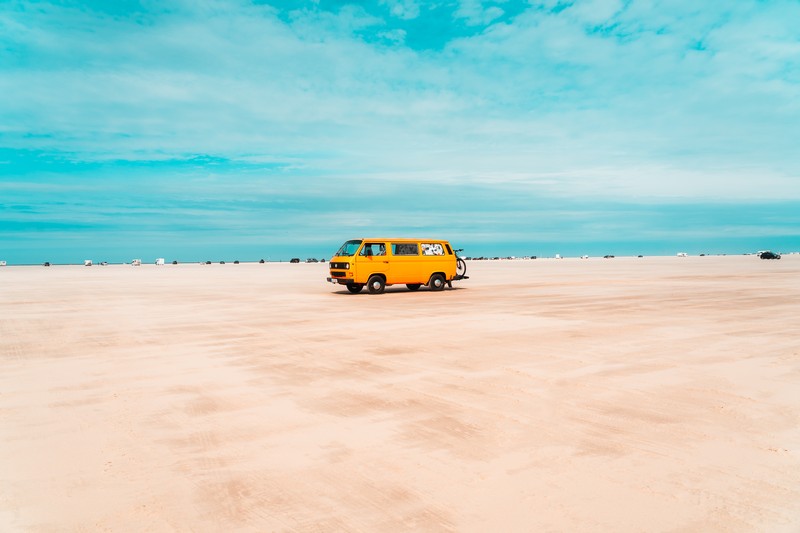
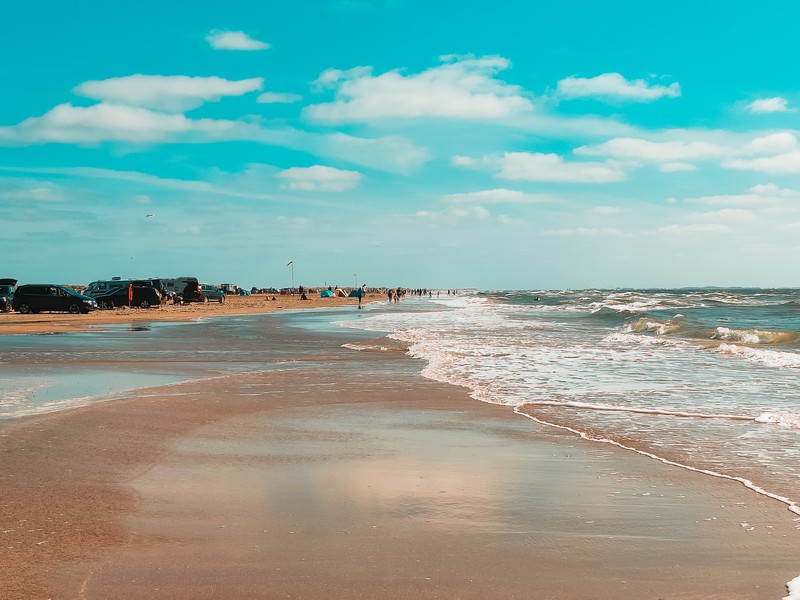
What you should definitely experience in Rømø is a sunset on the beach. That’s why I recommend at least one overnight stay here. There is a cool camping park right on the beach from where you can walk out onto the dunes in the evening: The First Camp Lakolk. In addition to motorhome pitches, there are also great chalets for families and couples.
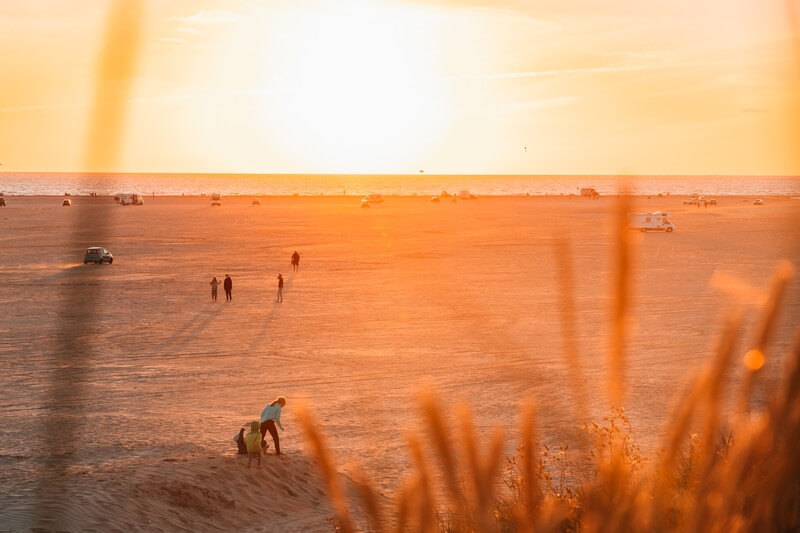
By the way: Overnight stays on the beach are not permitted. But some people do it anyway. It is also not permitted to fly a drone over Rømø.
2. Rømø to Ringkøbing Fjord
- Day 2: 1 overnight stay
- Accommodation tip: Camping spot Nørre Lyngvig Camping
Continue northwards. Your destination is the headland at Ringkøbing Fjord. You’ll pass lots of great places along the way.
Ribe
Ribe is a prime example of what a Danish town should look like. Small alleyways with sloping rows of houses with finely decorated curtains hanging in the windows. What’s more, Ribe is also the oldest town in Denmark and has the oldest cathedral church in Denmark.
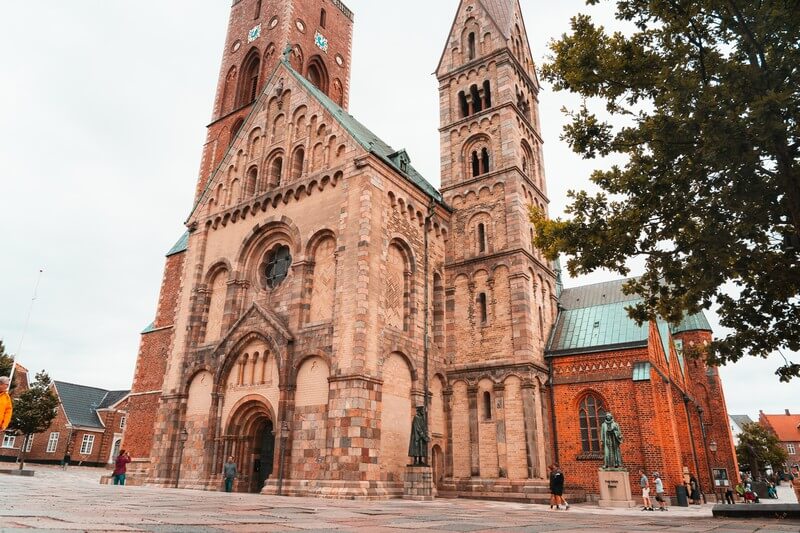
If you are looking for an overnight stay, Hotel Dagmar may be a good option for you, as it is located in the centre of Ribe’s central square right next to the cathedral.
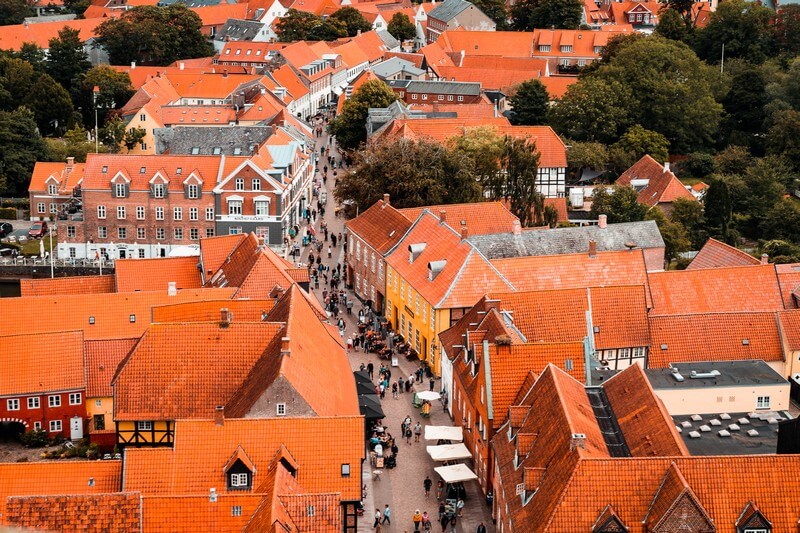
Esbjerg
Esbjerg is best known for its fishing and industrial harbour. It’s less beautiful, but it’s still worth making a stop at the statue “Man by the Sea”.
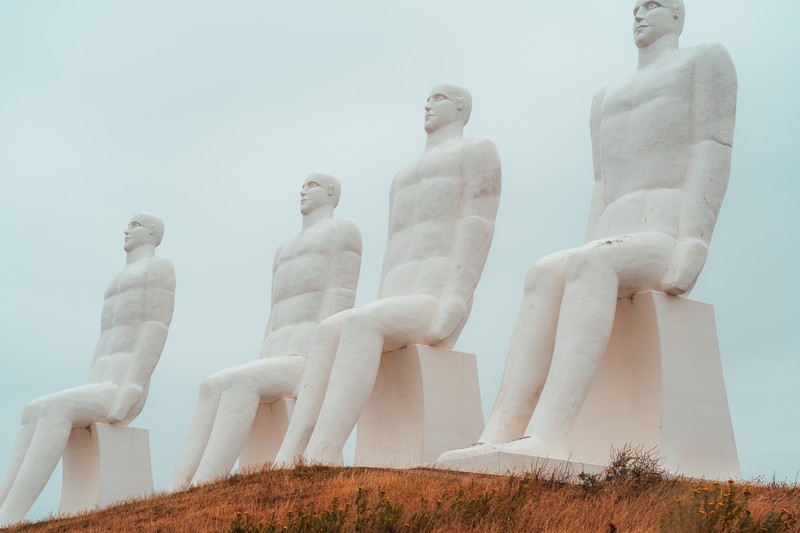
Blåvand
You should also take a detour in the direction of Blåvand – to Denmark’s most westerly point. Here you can visit the 39-metre-high Blåvandshuk Fyr lighthouse. From its viewing platform, you really do have one of the most beautiful views of the west coast. Admission for this is 30 DKK.
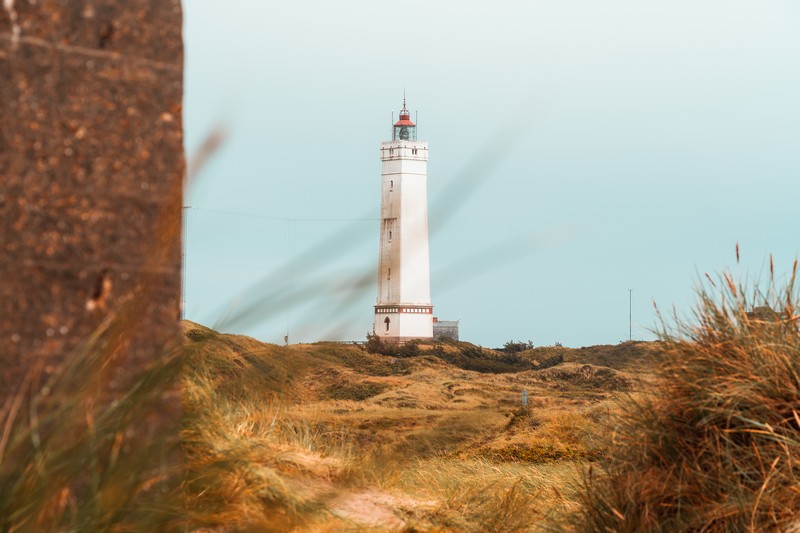
You can also hike along the coast here and explore the bunkers in the hills, or simply enjoy the expanse of white sandy beaches.
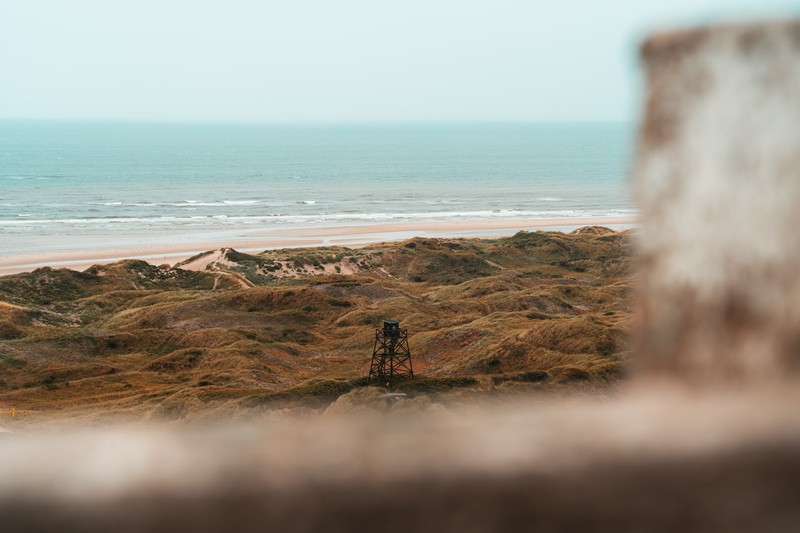
Lighthouse Lyngvig
Continue northwards until you reach the spit of land on Ringkøbing Fjord. Here you can see the North Sea to the west and the fjord to the east. This is a very special location and I can recommend that you look for accommodation here and explore the area a little more closely.
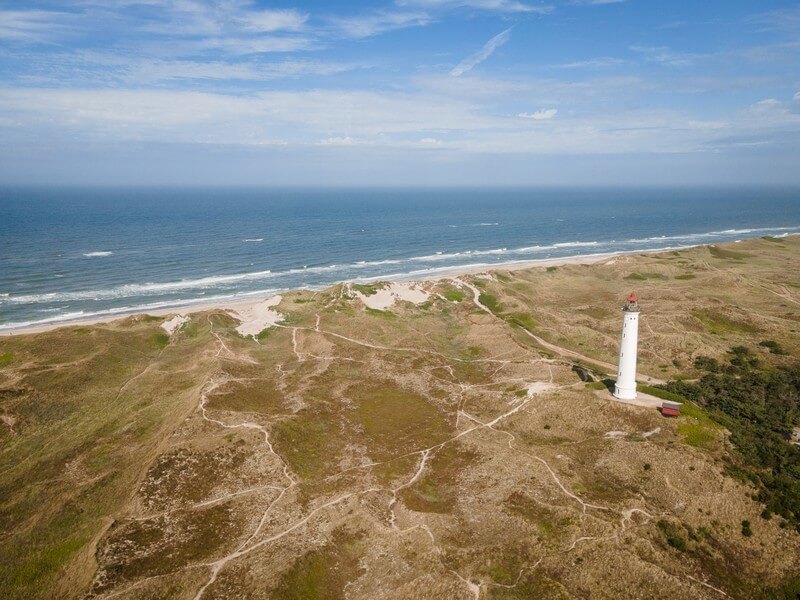
My tip for an overnight stay is the camping spot Nørre Lyngvig Camping. It is located right next to the Lyngvig lighthouse and you can choose your spot between the dunes or a little further back.
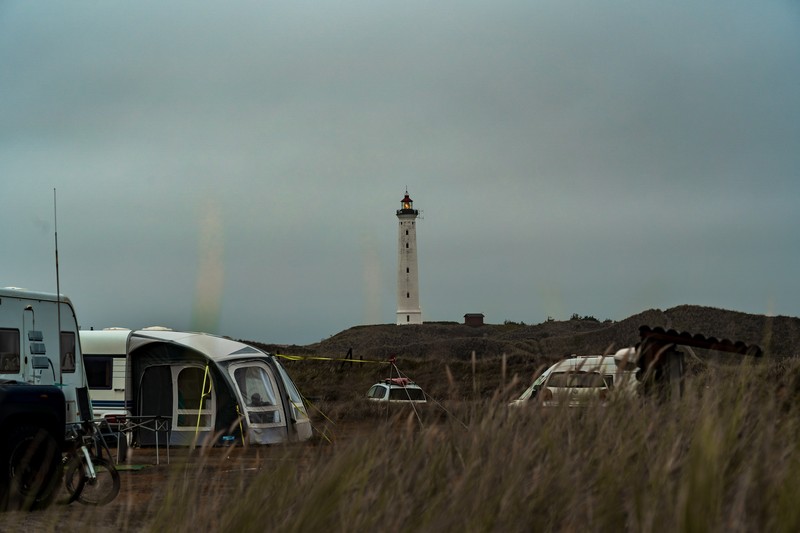
The site is very large, which is why you can’t book online here. You just have to drive there, go to reception and stand on a free pitch.
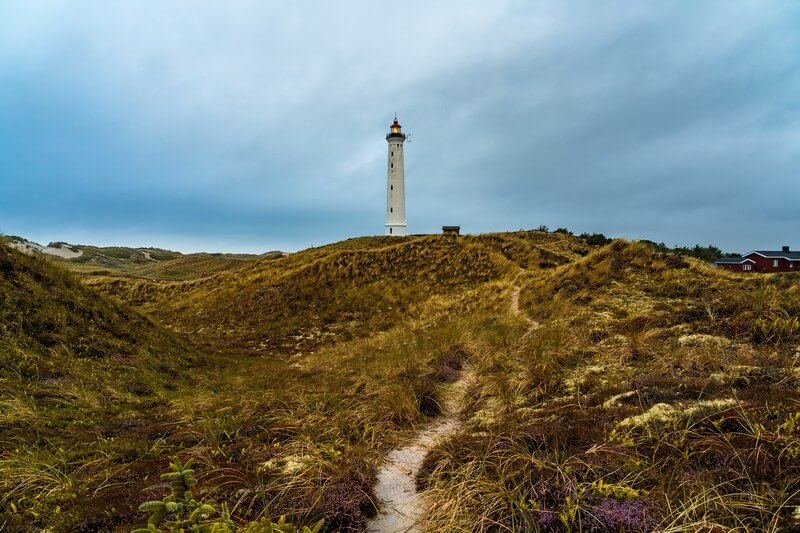
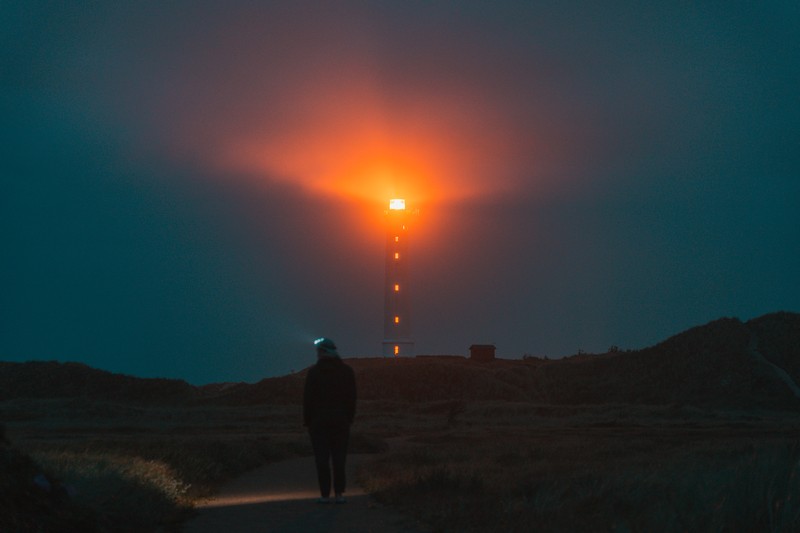
3. Ringkøbing Fjord to Thy National Park
- Day 3: 1 overnight stay
- Accommodation tip: Nystrup Klitmøller Camping & Cottages (campsite)
The next section of the route further north takes you to the most beautiful national park in Denmark. To reach the national park, you have 2 possible route alternatives here:
- Take the ferry from Thyborøn – this only runs at certain times, but you also have the opportunity to explore the south of the national park, such as Agger. The price for a trip is DKK 25 per adult and around DKK 200 for a campervan. Here you can find more information about the ferry.
- Inland – This route is longer, but you are not tied to ferry times and don’t have to pay anything.
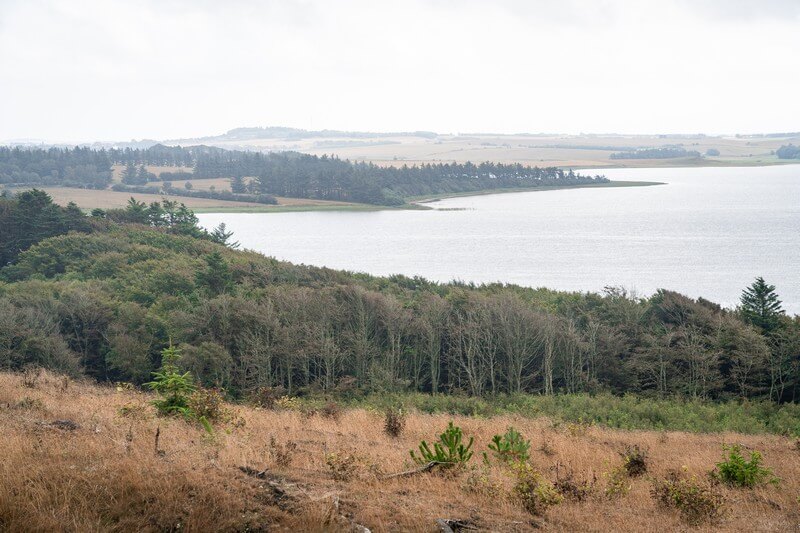
But before you have to choose one of these routes, you’ll pass a few great spots.
Bøvling Klit
Bøvling Klit is a small headland over which a road leads. On one side, the waves crash against the coast and on the other, the reeds blow gently next to the calm bay. In between, dunes tower over you from the tops of which you have a fantastic view of both sides.
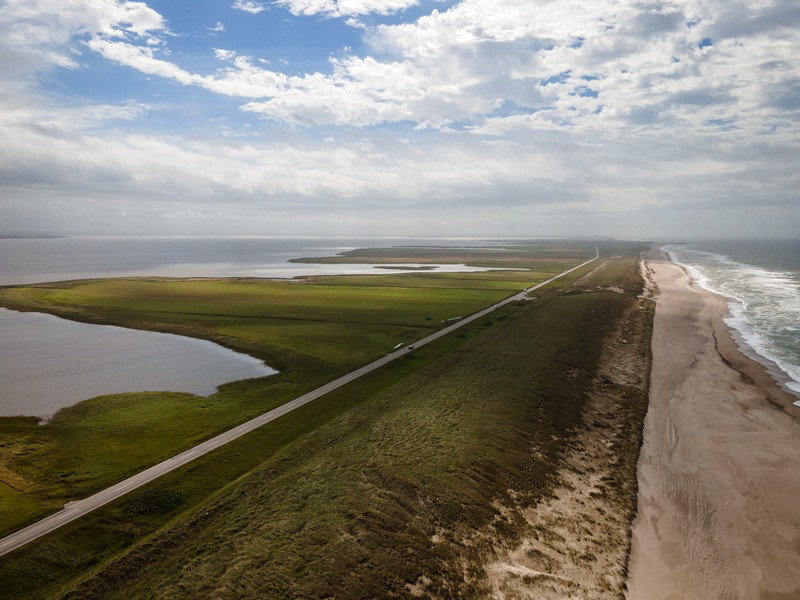
You will find car parks at regular intervals along the roadside. Choose one that’s not too busy and then just explore the area for a while.
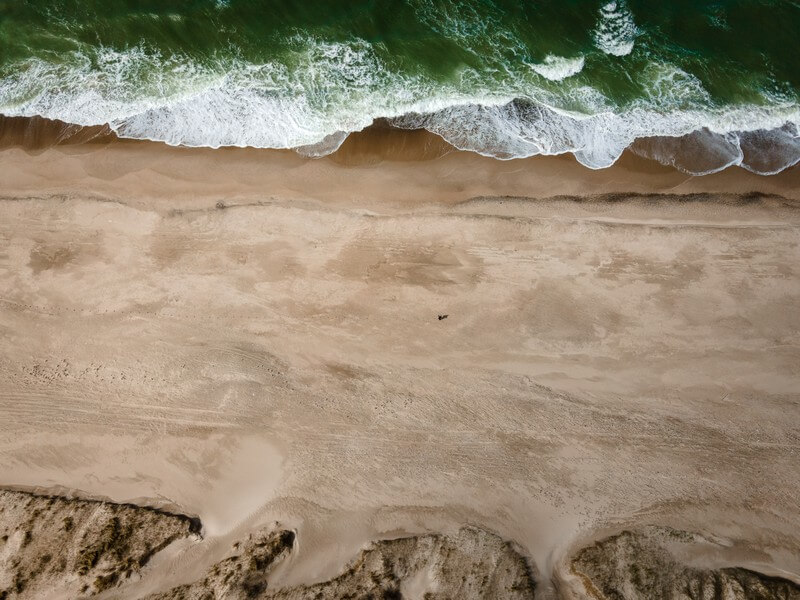
Bovbjerg Fyr
This red lighthouse is always well visited by tourists, but it’s still worth a visit. You can save yourself the view from the tower to the adjacent car park for 25 DKK. Instead, walk past the bored-looking ponies and explore the steep cliffs right next to the lighthouse. Afterwards, treat yourself to a coffee and cake in the lighthouse shop to recover from the stiff coastal breeze.
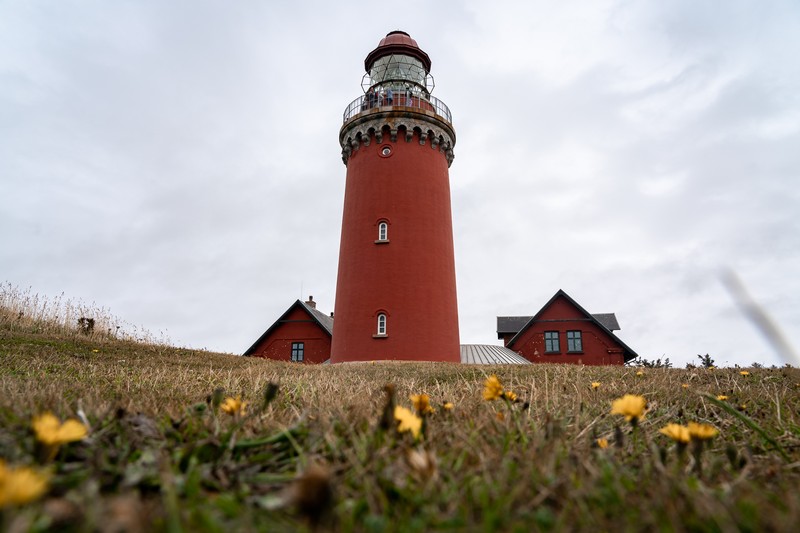
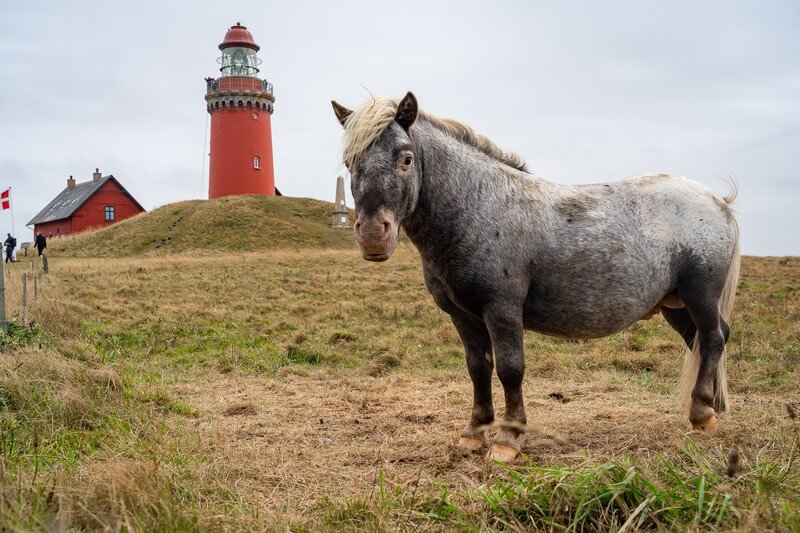
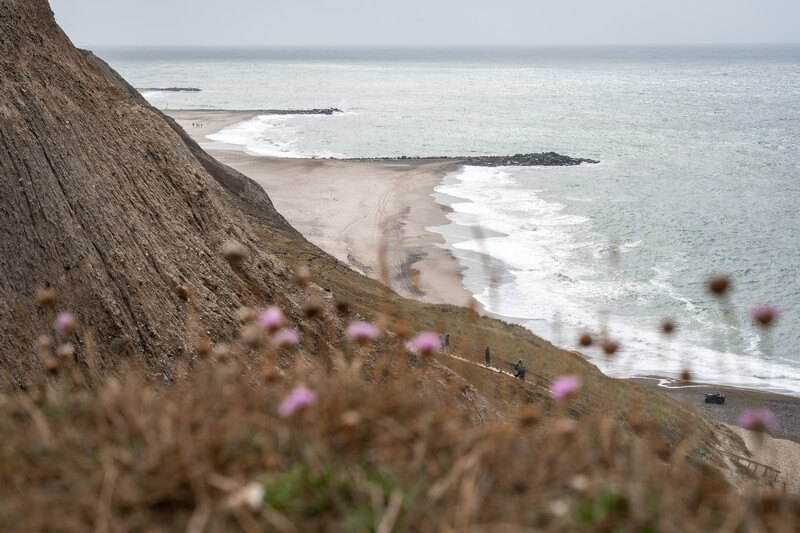
Thy National Park
Sculpted by the sea, wind, sand and salt, this national park is the oldest in Denmark and you’ll find plenty of tranquillity here in breathtaking natural surroundings: from large heathlands to dense forests and fantastic stretches of coastline with endlessly long sandy beaches and steep dunes, you’ll find everything an adventurer’s heart desires.
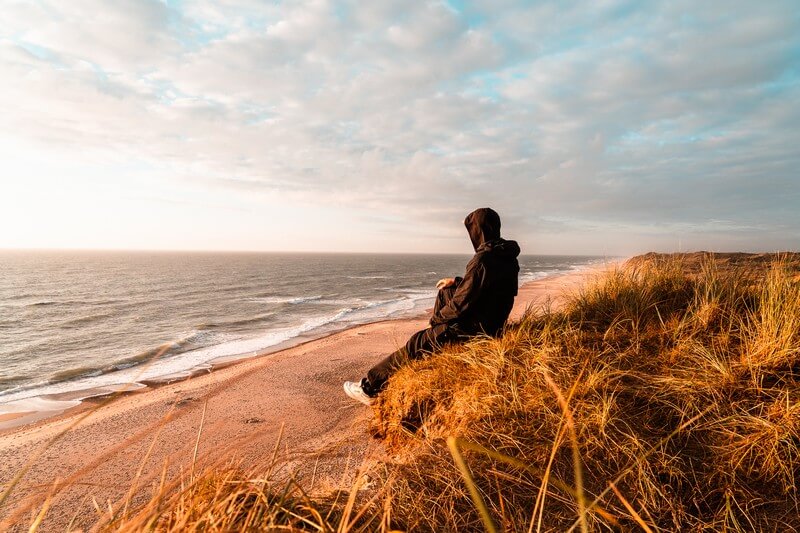
But the many lakes further inland in the park also offer plenty of great hiking trails. A short (about 1.5 kilometres) but very beautiful one takes you to Isbjerg. This starts directly at the car park next to Nors Lake.

Great places to visit in the national park are Klitmøller with its Cold Hawaii beach and the small fishing village of Vorupør with its many fishing boats on the beach. There are also campsites and more comfortable accommodation in both places.
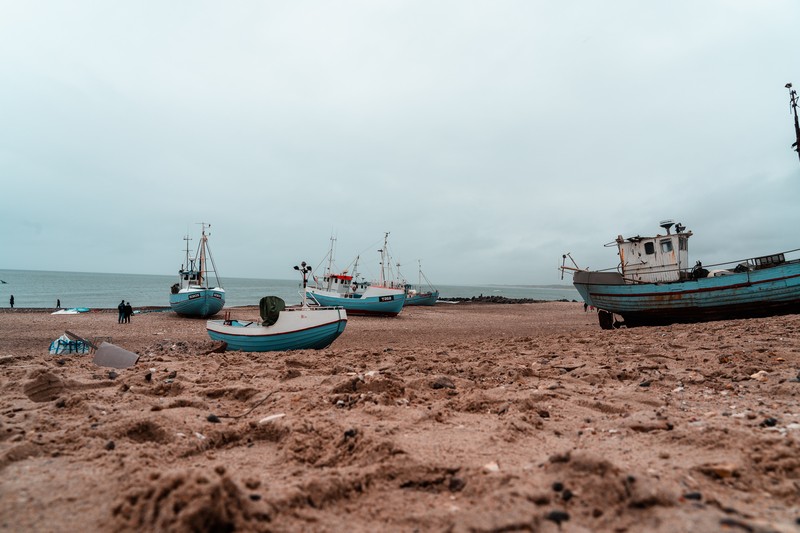
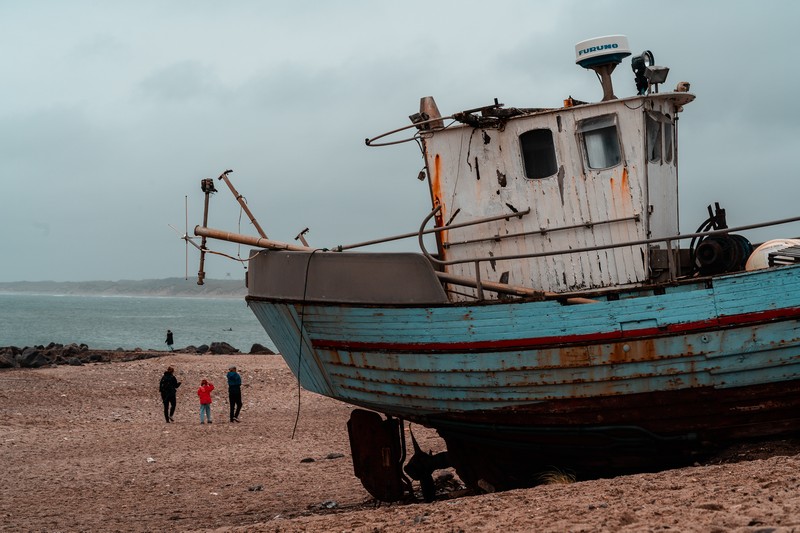
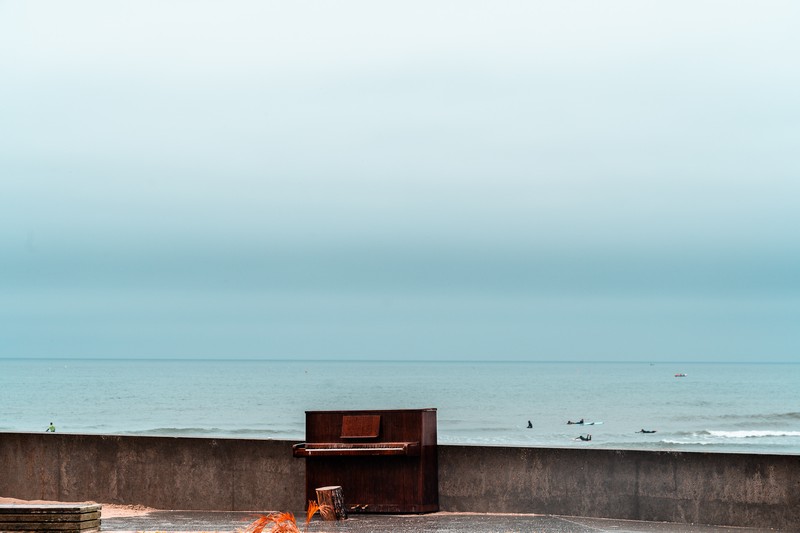
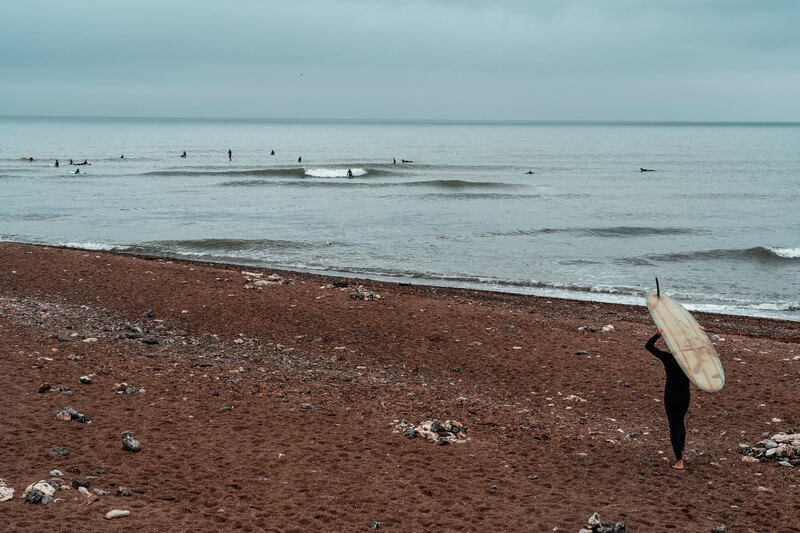
You can also visit the Thagaards Plantation, an old fruit plantation with bony trees shaped by the wind. I found the sunset at Bøgsted Rende, which is not very busy in the evenings.
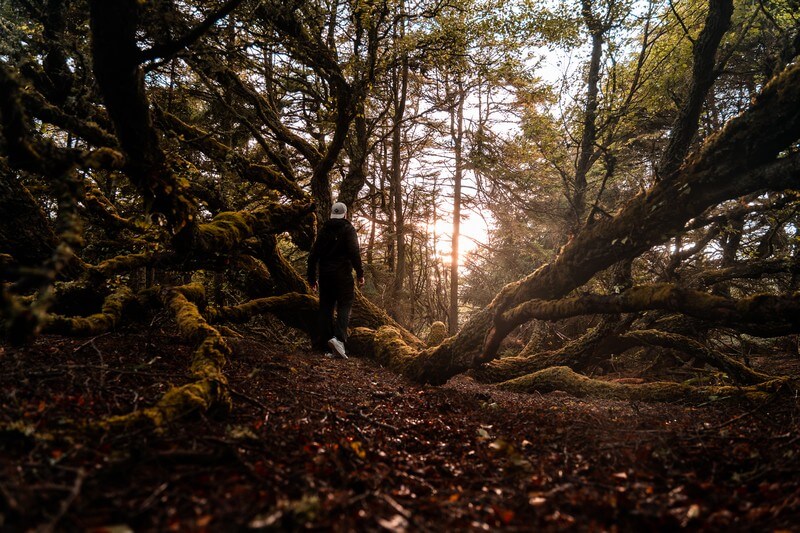
4. Thy National Park to Rubjerg Knude
- Day 4: 1 overnight stay
- Overnight tip: Gl. Klitgaard Camping & Cottages
After you’ve had your fill of the beautiful landscape of Thy National Park, head north to the next Danish diamond – Rubjerg Knude.
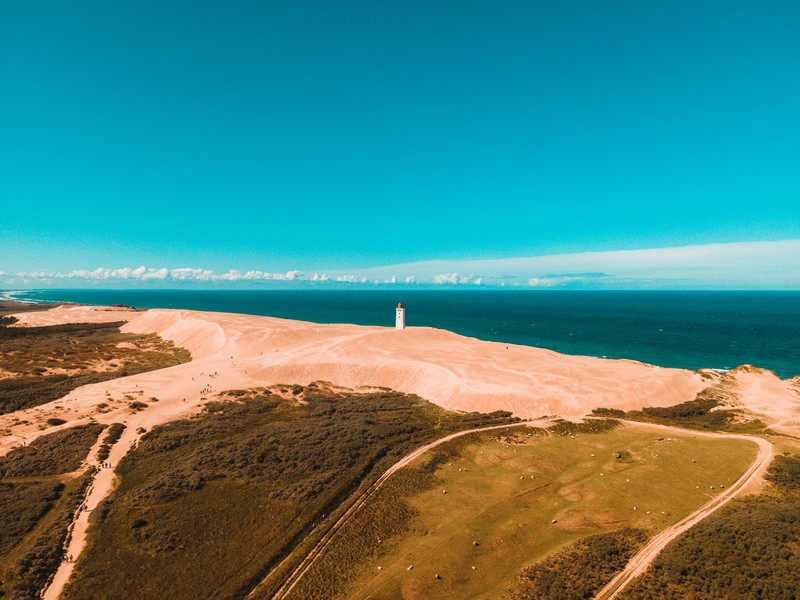
Rubjerg Knude is a large shifting sand dune and, with its abandoned lighthouse, one of Denmark’s most famous sights. The area was a highlight for me on Denmark’s west coast and I found it simply magical. I therefore looked for accommodation near the dune so that I had more time to explore the area.
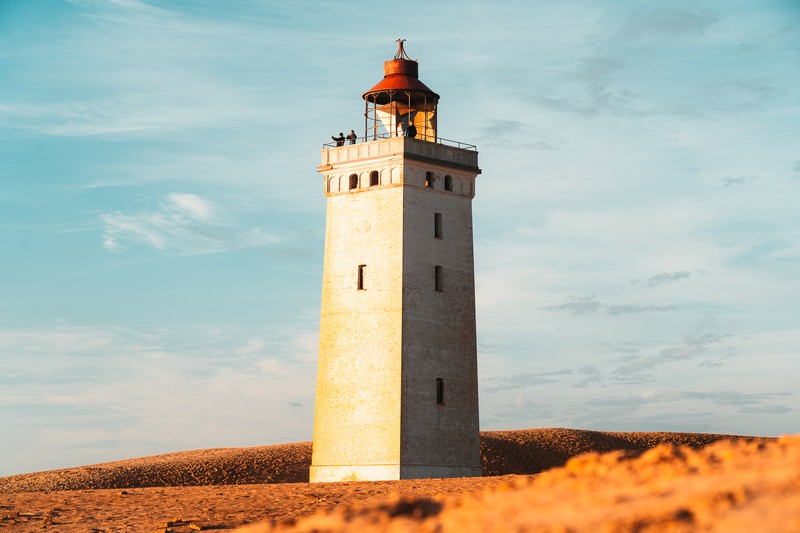
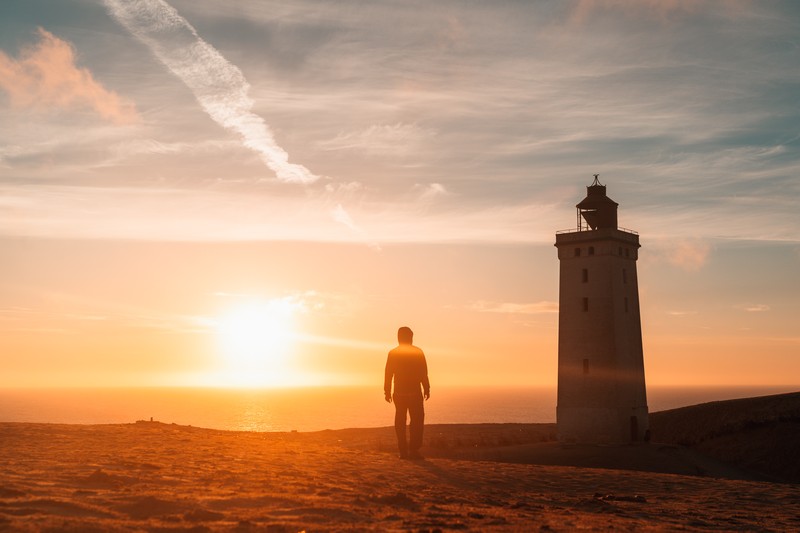
My choice was the campsite Gl. Klitgaard Camping & Cottages. You can reach the dune from here in 20 minutes by bike. There are not only pitches for motorhomes here, but also several holiday homes. The free outdoor pool and the petting zoo with quite trusting goats are particularly cool.
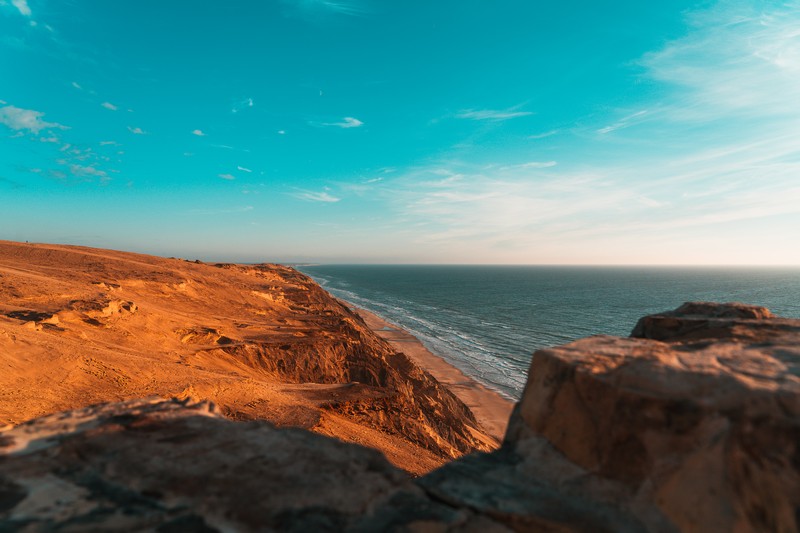
This allowed me to visit the dune in the evening when there were fewer tourists and I was able to stay there long after sunset and soak up the fantastic atmosphere in peace. I was also able to visit the dune again the next day. However, the place is very busy during the day.

5. Rubjerg Knude to Skagen
- Day 5: 1 overnight stay
- Overnight tip: Hotel Marie
Now continue northwards, where the Baltic Sea part of this Denmark route ends. From Skagen onwards, the route continues along the North Sea. To be honest, I found the area here too crowded. This is certainly due to the undoubtedly great sights that can be admired here and which are still worth a visit. But I spent the night somewhere else further south.
Råbjerg Mile
This shifting sand dune is probably the largest sandpit in Denmark – or in other words: The largest shifting sand dune in Denmark. You should definitely make a stop here and take a closer look at the 3.5 million cubic metres of sand.
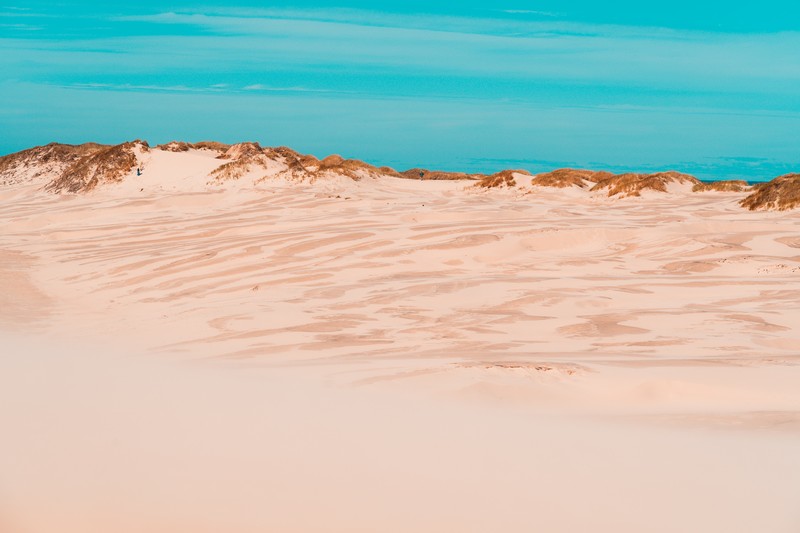
You can hike up the 40 metre high dunes and explore the entire 2 km² of Råbjerg Mile if you have enough time.
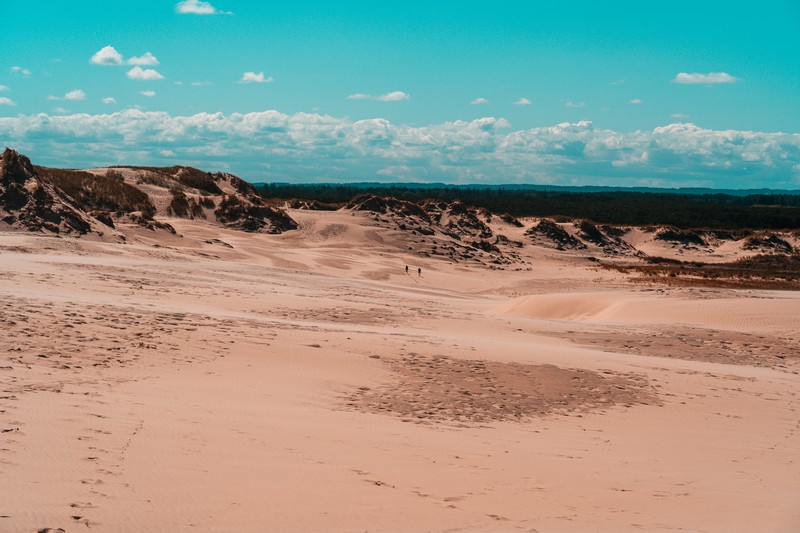
Borders
Grenen is the place where the Baltic Sea and North Sea kiss. Here you can walk along the beach deep into the sea over a sandbank. At the end, you can see the waves of the two seas lapping against each other.
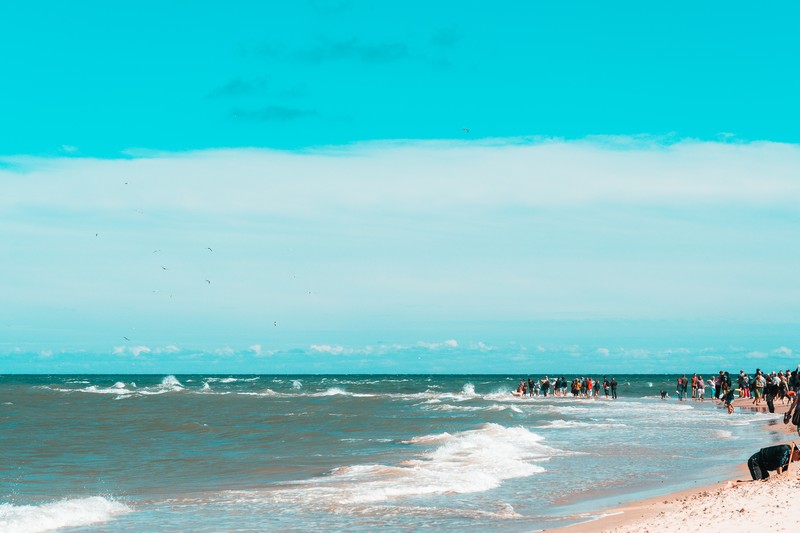
The reef of Skagen stretches a full 4 kilometres into the sea and changes shape in stormy weather, which regularly causes problems for ships and makes the place a hotspot for stranded ships. The locals once made good money here by salvaging them.
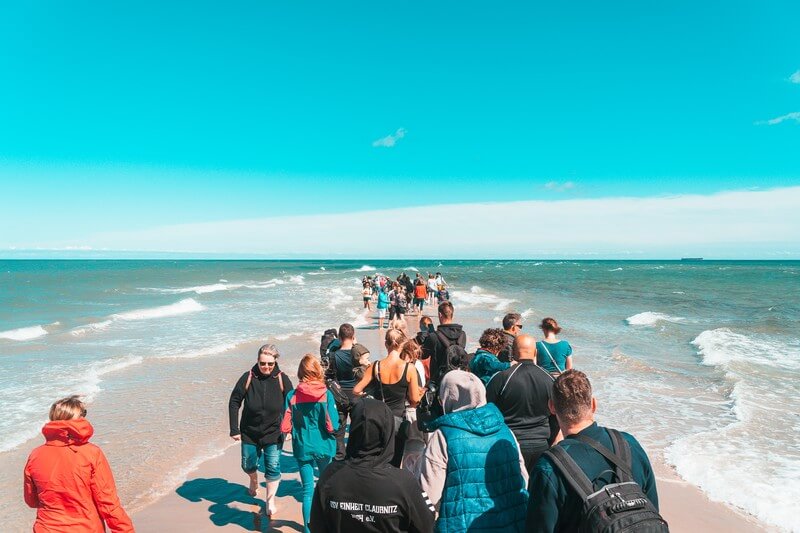
You will notice that this is also a hotspot for tourists when you drive through the car parks. At the car park in Grenen you can only pay by credit card. You have to insert it first and then again when you leave the car park. You will then be charged according to your parking time.
The walk from the car park to the point where the two seas meet takes about 15 minutes and leads across the beach.
Conclusion: A visit here for a photo is something to talk about after your holiday at work. But you shouldn’t be allergic to large crowds of tourists.
Displaced church
Another well-known highlight and lost place in the middle of a beautiful natural landscape is the sanded-up church. It is actually just the church tower. The rest of the church was demolished due to silting. You can also visit the inside of the tower for a small entrance fee. But in my opinion, it’s not really worth it. The highlight is rather the view of the church from the outside.
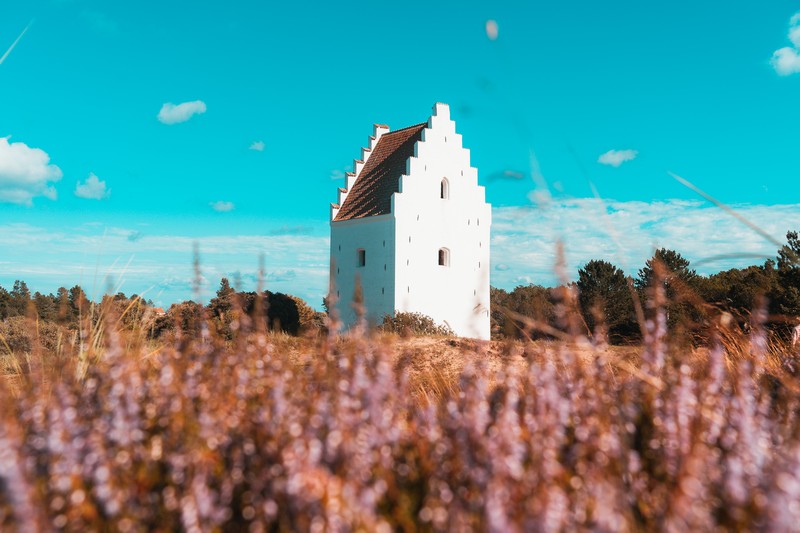
6. Skagen to Rebild Bakker
- Day 6: 1 overnight stay
- Overnight stay tips: Safari Camping
This section of the Denmark road trip takes you away from the coast and further inland. Here you will discover a forest region with steep heathland, turquoise springs and green forest.
Bakker National Park
This nature reserve really is a great place for hiking. You walk across a rugged area where gnarled beech forests alternate with steep, pink-flowered heathland and lush meadows where sheep graze.

Rold Skov
Rold Skov is the second largest contiguous forest area in Denmark at 80 km². You can enjoy the tranquillity of nature here.
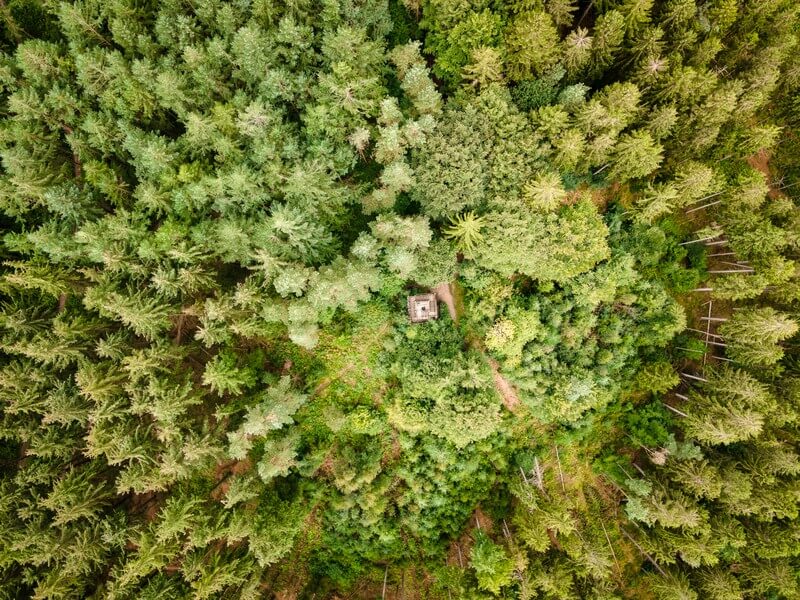
Relax at Lake Store Økssø, for example, admire the turquoise-blue water at the Store Blåkilde spring or climb the wooden Skovtårnet observation tower from where you can see the heathland on the slopes.

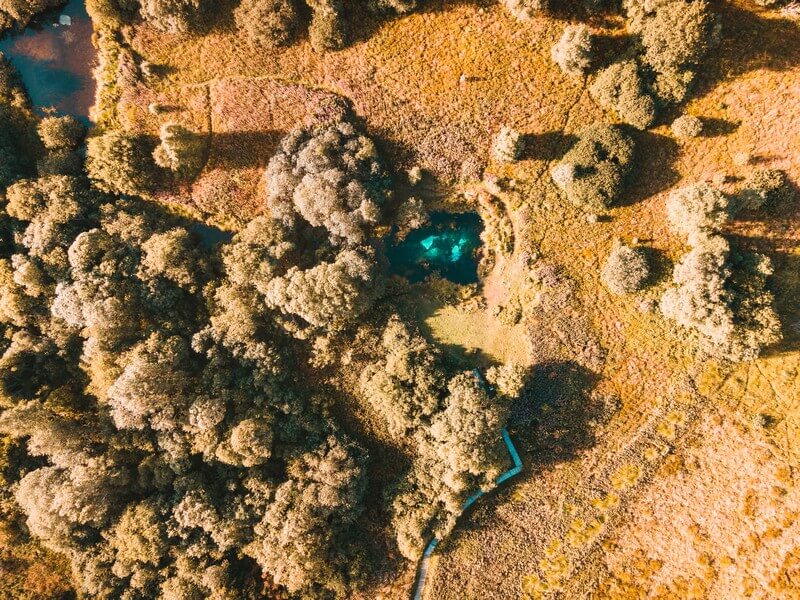
7. Aarhus
- Day 7-8: 2 overnight stays
- Overnight stay tips: Scandic The Mayor
Aarhus is the first stop in a major city along this Denmark route. It’s best to find a centrally located hotel where you can park your car and explore the city from there. Most of the highlights of Aarhus are within walking distance. I myself stayed at Scandic The Mayor right next to the iconic Aarhus Town Hall. There is parking in the hotel’s inner courtyard.

8. Aarhus to Jelling
- Day 9: 1 overnight stay
- Overnight stay tips: Fårup Sø Camping Jelling
On the way from Aarhus further south, immerse yourself in the time of the Vikings. Start with the Moesgaard Museum and then marvel at the rune stones in Jelling.
The burial mound of Jelling
Over 1000 years ago, the Viking kings Gorm the Old and his son Harald the Blue-toothed left these two burial mounds. They were surrounded by a mighty granite ship.
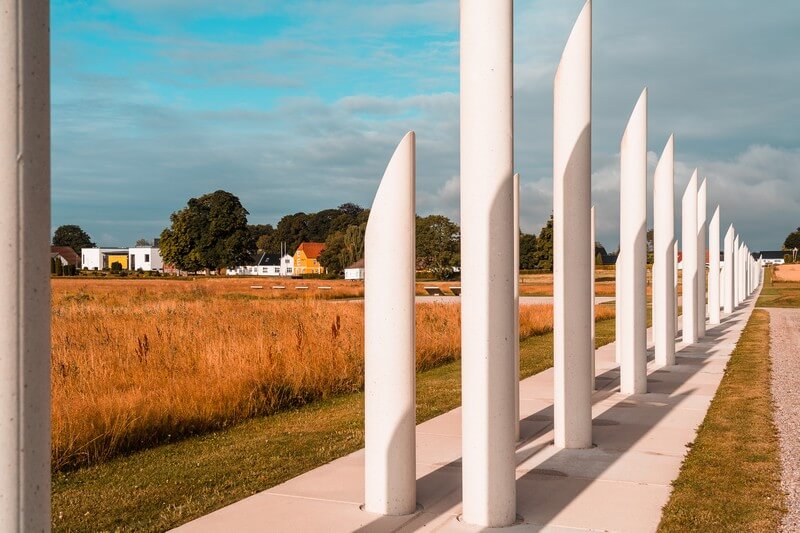
In the centre of the area is a church and next to it are 2 rune stones on which the name of Denmark was first mentioned in writing.
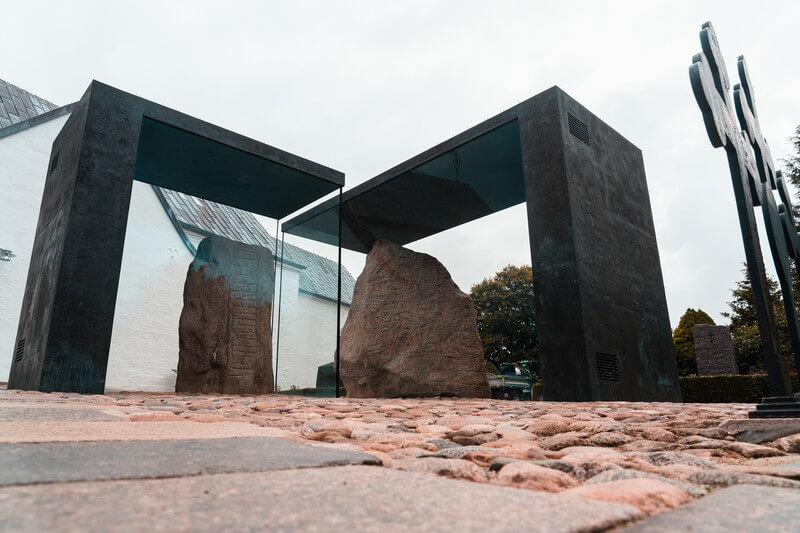
Vejle
The town of Velje is worth at least one stopover. Because there are 2 architectural highlights here: The Fjordenhus by architect Olafur Eliasson and the spectacular, wave-shaped residential building with the simple but fitting name “The Wave“.
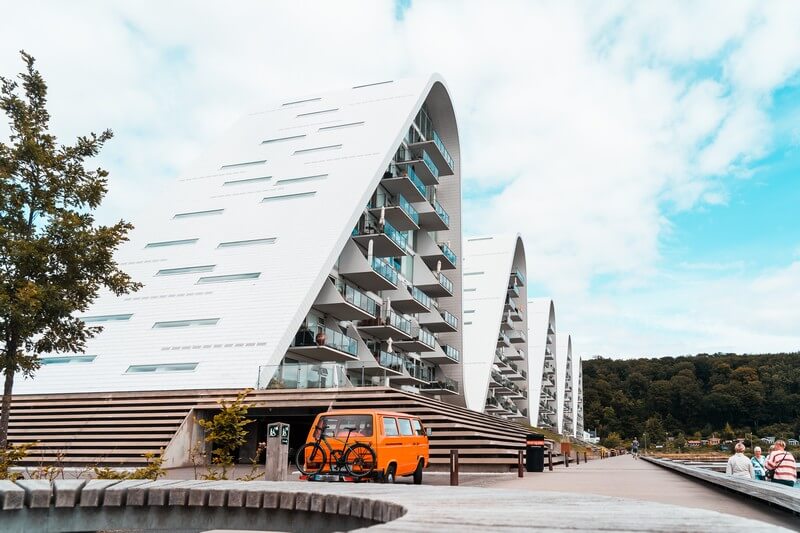
Just walking along the harbour promenade and observing these buildings from every possible angle is an experience in itself. With the Remouladen restaurant, you also have a place where you can dine in high class.
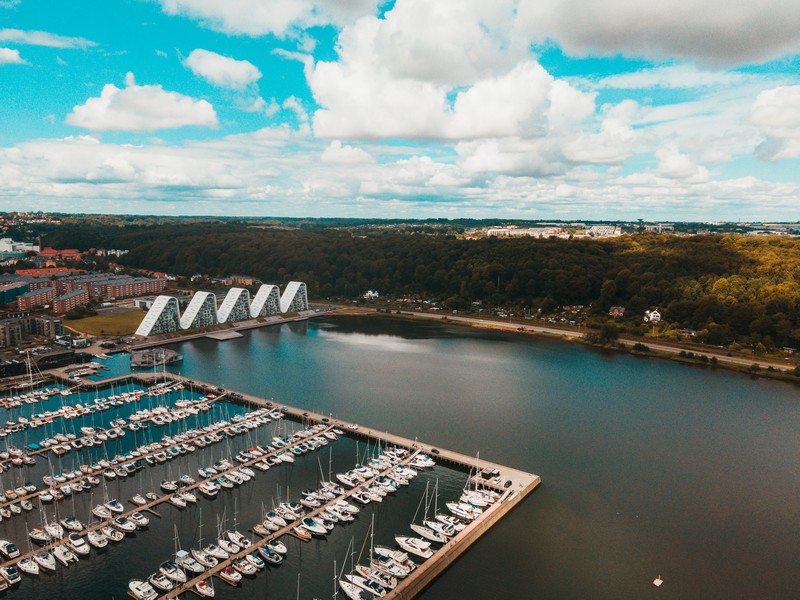
9. Jelling to Helnæs
- Day 10, 1 overnight stay
- Overnight stay tips: Aa Strand Camping
Now you leave Jutland in the direction of the Danish islands. The first stop takes you to the south-west of Funen. The area is less crowded, there are great sandy beaches and top campsites. In short: a great place to relax. I can recommend the campsite AA Strand Camping, which also offers holiday flats.
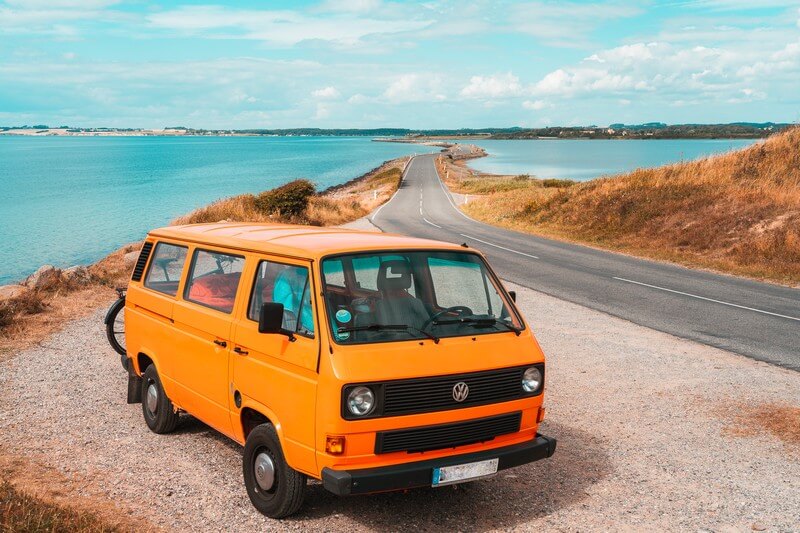
The campsite is a great starting point for further explorations in the area. I was particularly taken with the neighbouring small island of Helnæs. Only a narrow, 2.8-kilometre-long causeway leads across the Baltic Sea to the island, which makes for a great photo opportunity.
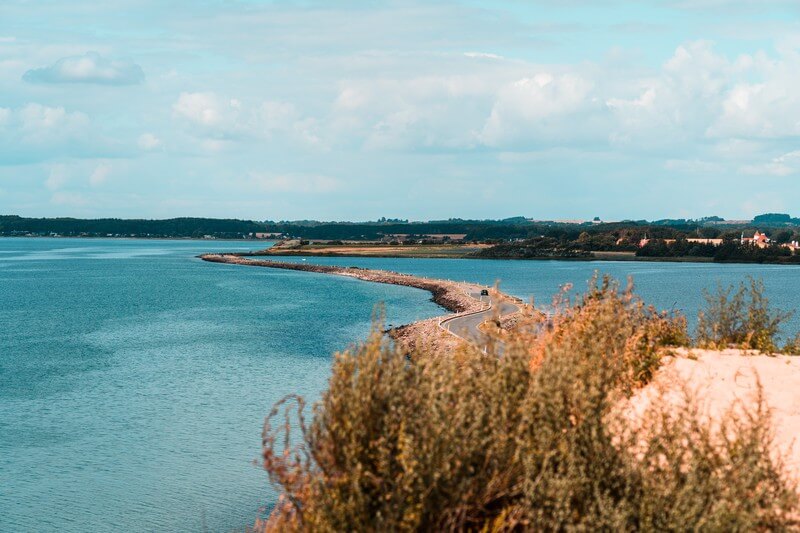
10. Helnæs to Copenhagen
- Day 11-12: 2 overnight stays
- Overnight tips in Copenhagen: Bellahøj Camping or 71 Nyhavn Hotel
Continue via the rivery Storebæltsbroen to the island of Seeland. Your destination here is the Danish capital on Zealand’s east coast. But before that, there are a few great sights that you shouldn’t miss out on.
You can easily spend the night in Copenhagen. There are several campsites but also plenty of fantastic hotels:
Egeskov Castle
The €30+ entrance fee is well worth it for one of the most beautiful castles in Denmark. It’s best to get your ticket in advance online, then you don’t have to queue and can simply walk through.
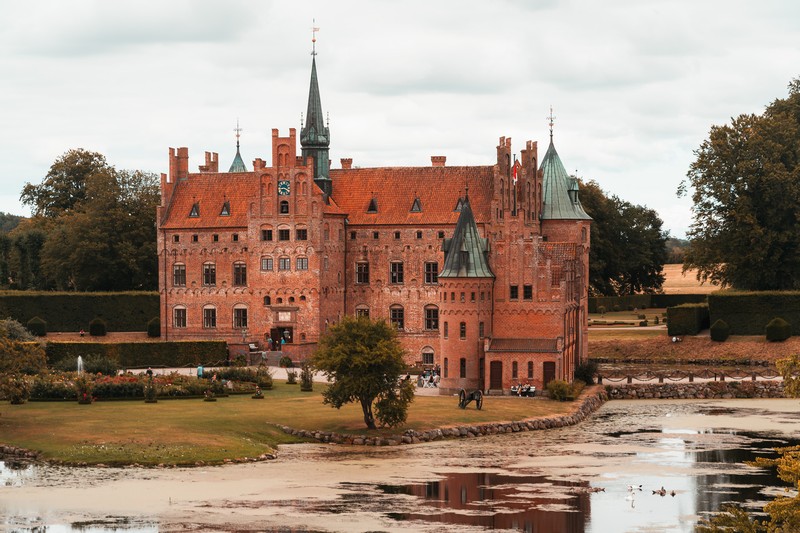
Storebæltsbroen
Crossing the bridge costs around €35 (DKK 250). Not exactly cheap, but there is no cheaper alternative to get to Copenhagen. And this is only the price for a normal car or caravan smaller than 6 metres (note: bicycles on the back count towards the total length).
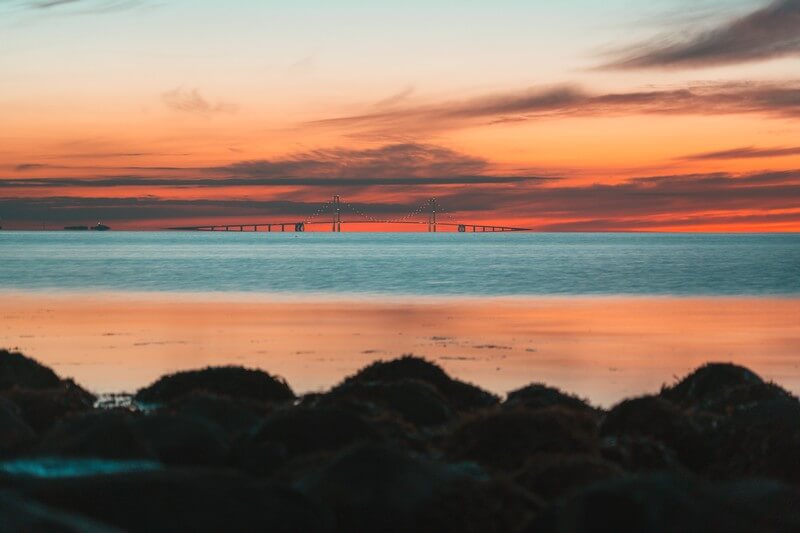
The toll booth is located on the eastern side. There are several passages for credit cards (blue) and also one for cash (yellow). I was able to pay here with Visa Debit without any problems. The length and the number plate are conveniently recognised automatically: Just pull up, hold your card up to it and wait for the lockers to open.
If the onward journey to Copenhagen is too far for you and you’d rather plan more time, then it’s a good idea to look for a campsite near the bridge. I can recommend the campsite Tarup Strand Camping. From here you have a great view of the bridge, especially at sunrise.
Copenhagen
Now you’re in Denmark’s capital. There is a lot to explore here, which is why I would advise you to stay 2 nights. That way you have 2 full days for excursions in the city.
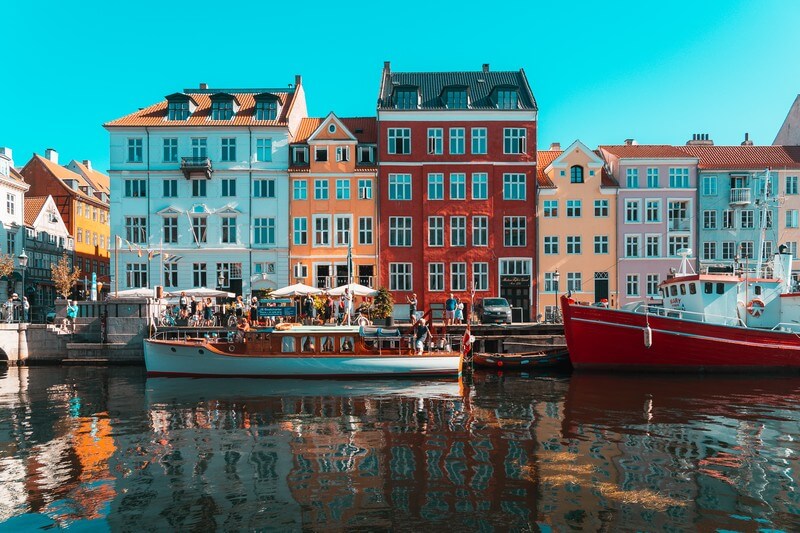
There are also 2 cool campsites in Copenhagen that are not quite so far from the city centre.
Bellahøj Camping – This is probably the most central campsite in Copenhagen. It’s about 15 minutes by bike from here to the centre. It is a large meadow with a few pitches with electricity and many without. In the centre of the site there are a few festival showers and sanitary facilities with toilets and washbasins. Those who can do without comfort and luxury will feel at home here.
Charlottenlund Fort Camping – A little further out of Copenhagen, but also only about 7 km from the city centre, this campsite is located at a listed fort. There are only 65 pitches here.
12. Copenhagen to Møns Klint
- Day 13: 1 overnight stay
- Overnight stay tips: Moen Strand Camping – Ulvshale
Møns Klint
Møns Klint is a truly impressive piece of coastline on the Danish island of Møn. You’ll almost feel a bit like you’re in Jasmund National Park on Germany’s largest island, Rügen. Typical of the coast here are the white limestone cliffs, which literally dazzle you when you look out to sea from the darker forest at their edge.
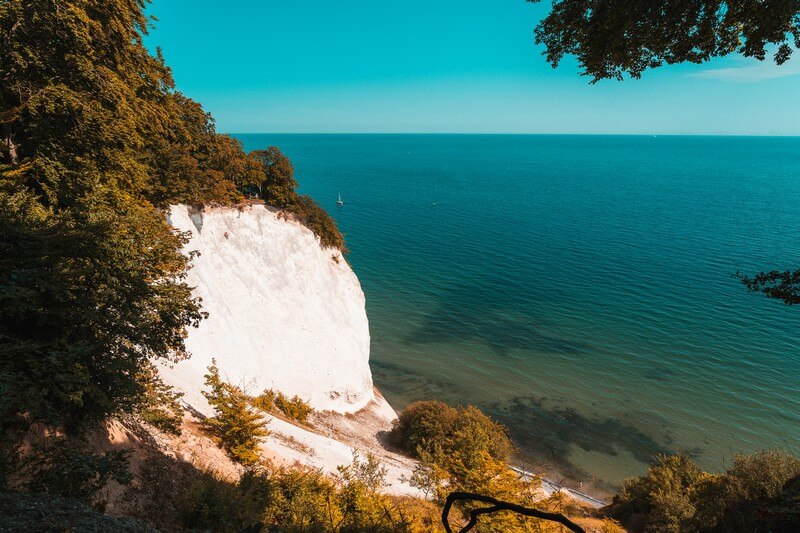
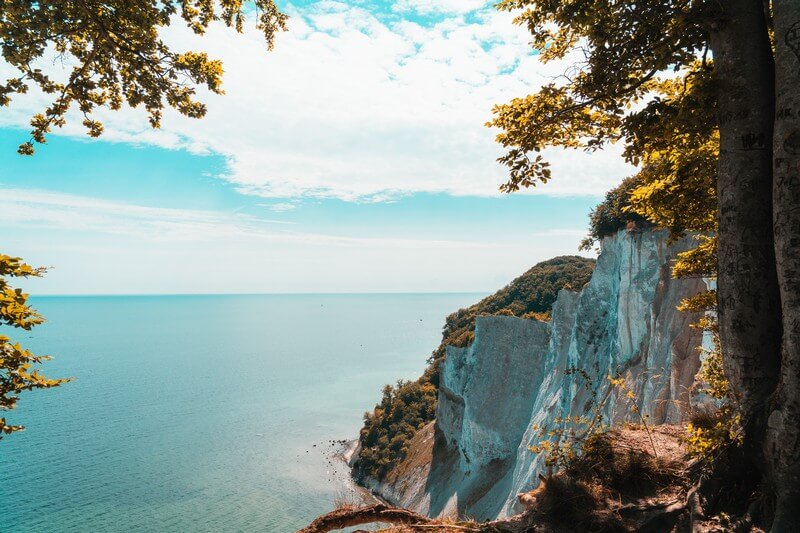
The best thing to do is to find accommodation somewhere on the island of Møn and then explore the cliffs from there. To get directly to the cliffs, you can use the car park at the Geocenter. This is the largest car park, but parking fees are charged here. A little further north, however, there is a free hiking car park, from where you can take a 3-hour circular walk to the Geocenter along the cliffs and back again. I can definitely recommend this route.
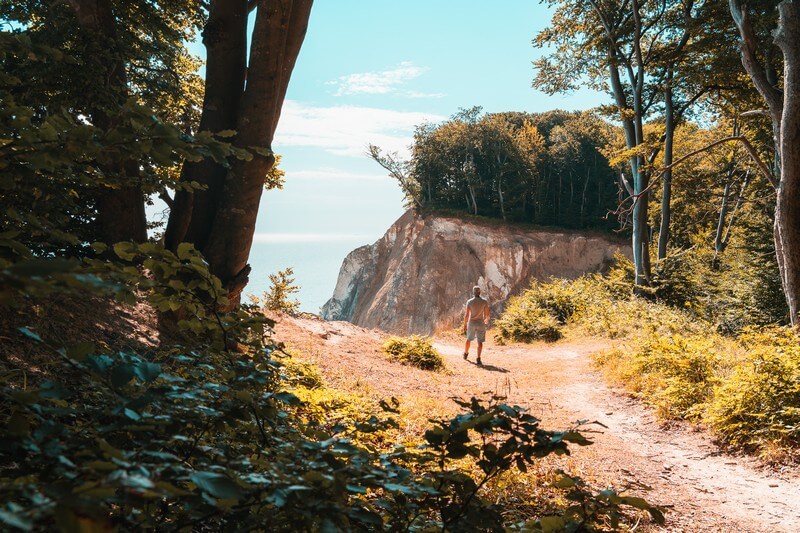
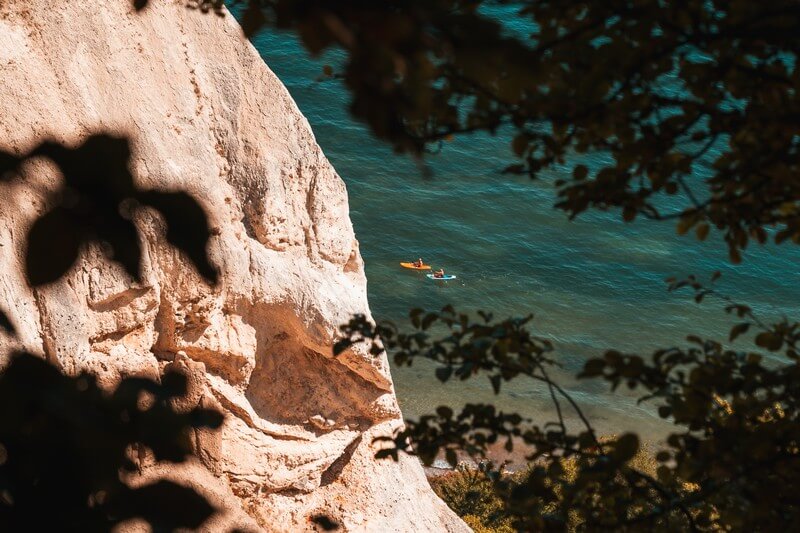
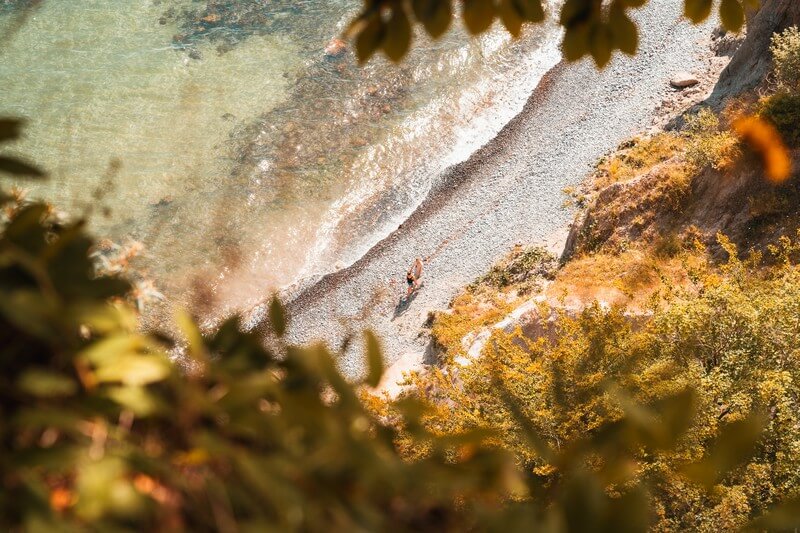
By the way: Flying drones is strictly prohibited here from 1 February to 1 September.
13. Møns Klint to Hamburg
Day 14: End of the Denmark Route in Hamburg
The last section of the route takes you back to the starting point. Return to Germany with the ferry from Rødbyhavn to Puttgarden on the island of Fehmarn. You can book your tickets online in advance directly with Scandlines. There are quite a few crossings per day.
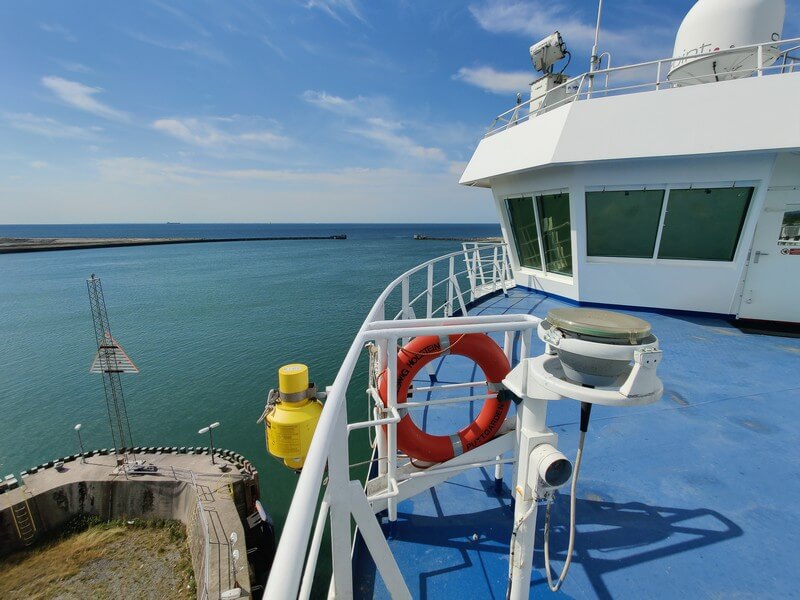
Denmark road trip tips
In principle, driving in Denmark is not much different from driving in Germany. But you should pay attention to a few small details.
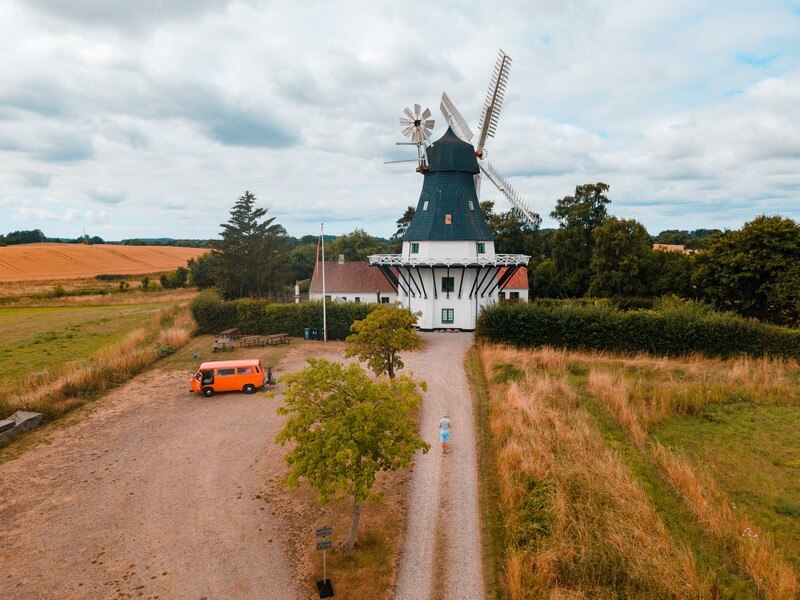
Note the park rules
You should definitely pack a parking disc on your road trip. This is because parking is free in many car parks. However, like everywhere else, it depends on the details. Because there are a few special rules that can be very expensive if you don’t follow them. Nobody wants to have a parking ticket stuck to their windscreen wipers with a bill of DKK 510 (the equivalent of €70) or even more.
Here you can find all the details on what is and isn’t allowed in Denmark.
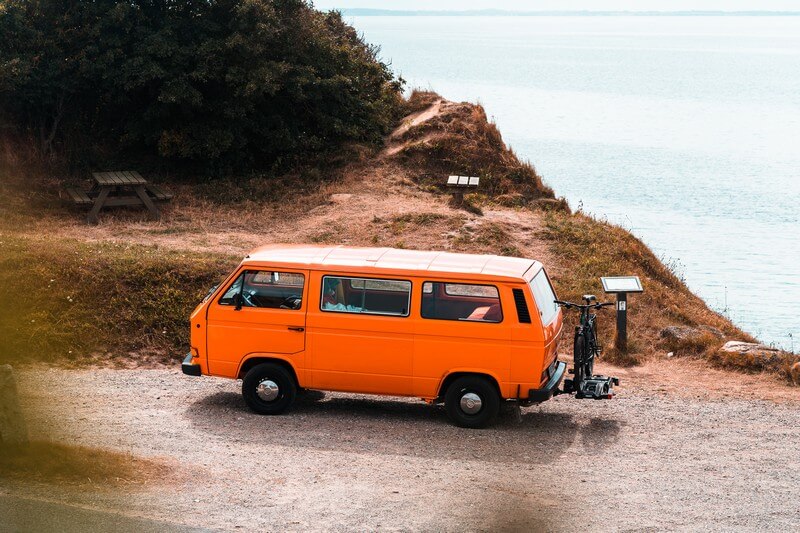
Fuelling with credit card
Filling up with petrol in Denmark mainly works via automatic filling machines, i.e. without the involvement of a fuel attendant, as is the case at most petrol stations in Germany. The special feature: You have to pay first and only then is the petrol pump activated. It works like this:
- Insert credit card or EC/Maestro card
- Set the language: This is an optional setting on most vending machines
- Select the dispenser number
- Remove the card: You shouldn’t forget that
- Fuelling
- Print the receipt and take it with you: Sometimes you have to insert the card again
Your account will then be debited the same amount as you have refuelled. The whole process takes a bit of getting used to at first, but once you’ve gone through it once, it goes very quickly.
Light during the day
In Denmark, you must also have your car lights on during the day. If you forget to do this, not only will you be honked at by many oncoming cars, but you may also be sent home with a fine of around €70.
A Denmark roadtrip offers plenty of variety and adventure? Which route in Denmark can you recommend? Do you have any other roadtrip tips for Denmark? I look forward to your comment
Tools & services I recommend for your trip:*
📶 Flexible and affordable mobile Internet worldwide
🚁 My drone for aerial photography
🚗 Find and compare cheap rental cars
🎟 Find and book cool activities
🔒 Secure Internet connection with NordVPN
*Note: These links are affiliate links. If you book through them, I will receive a small commission without it being more expensive for you. A purchase from you via these links helps me to continue offering free content without annoying ads on this website. Thank you for your support! I really appreciate it!

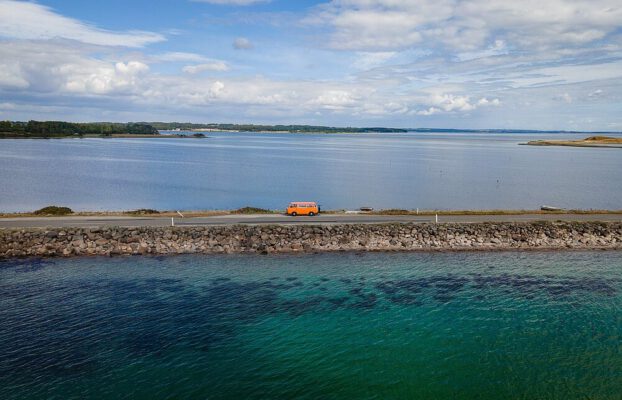
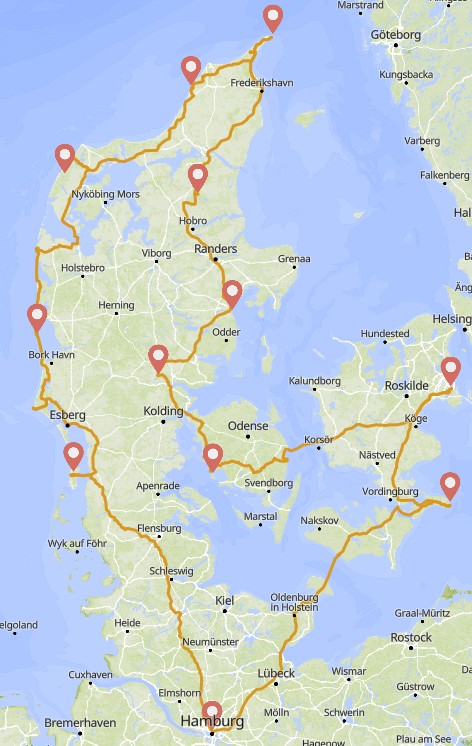
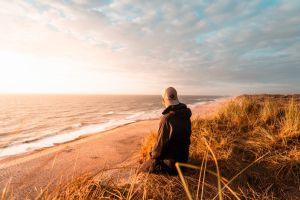
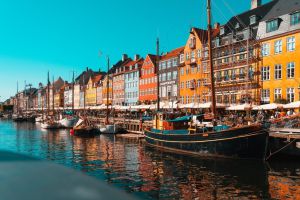
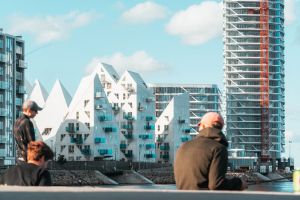

Thank you. Very helpful information!
Thanks. I appreciate that.